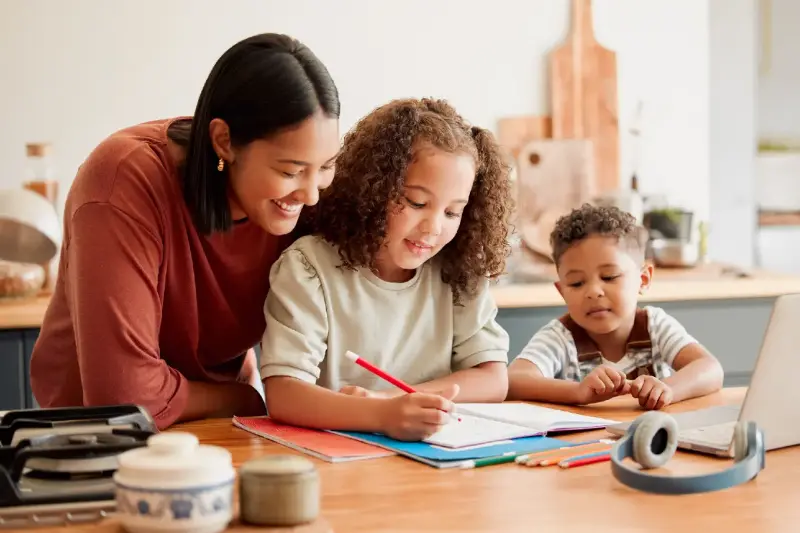From cradle to confident stride, every child’s journey is dotted with miraculous leaps. Watching little ones take their first steps, blurt their first words, nurture deep friendships, and develop unique personalities is nothing short of magical. For parents and caregivers, understanding these leaps—and how to nurture them each step of the way—not only supports healthy development but also builds stronger family bonds. Here’s an inspiring look at childhood growth, peppered with fascinating facts and practical insights.

Understanding Milestone Magic: The Building Blocks Of Growth
Child development is elegantly complex. From the moment a baby is born, their brain makes more than a million new neural connections every second. These rapid-fire connections underpin skills from babbling and crawling to empathy and problem-solving. Researchers call the most noticeable spurts “developmental leaps.” Each leap brings fresh abilities, frustrations, and discoveries.
Interestingly, while growth charts and milestone checklists provide important guidelines, every child’s pace is unique. Some infants say their first word at eight months; others may wait until nearly two years old. The averages only highlight diversity, not deficits. Studies show that healthy variation exists, and children often “catch up” naturally if they lag in one area but thrive in another.
For parents, this means observing patterns rather than obsessing over exact timelines. The key is consistency in loving responses, communication, and stimulation.
Infancy To Toddlerhood: Laying Foundations For Curiosity
The first three years are a whirlwind of change. During this phase, the senses explode into life—sight, sound, touch, taste, and smell are all actively mapping the world. Contrasts, faces, and patterns attract their gaze, while playful sounds spark giggles and experiments.
The science is clear: reading aloud, singing, and narrating daily routines not only comfort little ones but build critical language pathways. Even before they can talk back, infants are absorbing vocabulary and tone. Physical play—rolling, tummy time, reaching—encourages muscle development and coordination.
As children begin to toddle and explore, their curiosity often outweighs their caution. Simple “yes spaces” where everything is safe to touch and investigate can foster confidence and self-initiated learning. Setting gentle, clear boundaries also teaches essential skills in self-regulation.

The Magic Of Play: Fuel For Emotional And Cognitive Growth
Play isn’t just fun—it is the serious work of childhood. Through play, from stacking blocks to chasing imaginary dragons, children develop social skills, creativity, and resilience. Neuroscientist Dr. Stuart Brown calls play “as basic as eating, sleeping, and breathing” for healthy development.
Group play lays the groundwork for empathy, negotiation, and sharing. Solo play, in turn, builds concentration and the ability to entertain oneself—an underrated skill that supports future independence. Open-ended toys such as wooden blocks, art supplies, and puzzles provide endless learning possibilities, encouraging imagination over mere consumption.
Role-playing also allows children to process emotions. Acting out frustration or joy through puppets or games helps children make sense of big feelings and learn coping strategies.
Navigating Setbacks: Building Resilience, One Leap At A Time
No childhood is free from stumbles. Whether it’s a scraped knee, forgotten homework, or playground squabbles, setbacks are key parts of the journey. Clinical studies show that children who face challenges and receive encouragement, not just solutions, develop what psychologist Angela Duckworth calls “grit”—the perseverance to keep trying after failure.
Supporting resilience means modelling a growth mindset. Phrases like, “It’s okay, you can try again,” or, “What can we do differently next time?” encourage problem-solving over perfection. Allowing children to make small mistakes and recover, instead of rushing to rescue, builds confidence for bigger risks later.
From Dependence To Independence: Guiding With Gentle Hands
Around the age of six and onward, children crave greater independence. They want to choose their friends, hobbies, and even their outfits. This budding autonomy is critical for self-esteem and identity formation. The most successful transitions happen when trusted adults balance freedom with security.
Setting age-appropriate responsibilities—like packing their own bag or contributing to family chores—cultivates both pride and competence. At the same time, keeping communication channels open helps children share worries without fear of judgment. Simple questions like, “How did your day go?” and patient listening can open doors to deep conversations even as kids drift toward adolescence.
The Power Of Positive Connection: Family As The Heartbeat
Nurturing every leap, from infancy to independence, is all about connection. Harvard University’s Centre on the Developing Child describes relationships as “the active ingredient of the environment’s influence on healthy development.” Shared meals, laughter, and traditions reinforce a child’s sense of belonging.
Even the busiest families can find pockets for connection—bedtime stories, weekend walks, or shared breakfasts. These moments add up, serving as steady anchors in the face of life’s inevitable changes.
Ultimately, no parent or caregiver is perfect, and no childhood unfolds exactly to plan. But with empathy, playfulness, and responsive support, every family can nurture the leaps that lead children from tottering steps to triumphant independence. Each milestone, celebrated or quietly observed, is a testament to growth—not just of children, but of the whole family.
